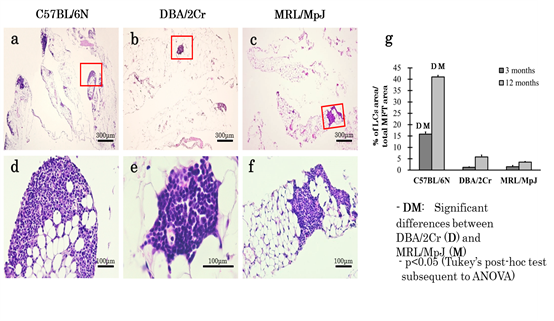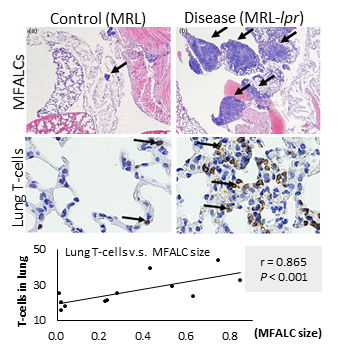概要
The adipose tissue is no longer considered to be an inert tissue that solely functions as an energy storage. Wherever, it also considered as a major endocrine organ, producing hormones and adipokines (Kershaw and Flier, 2004). Furthermore, recently it has been reported to have immune function, where lymphoid clusters were observed in the adipose tissue of both human and mouse mesentery and are termed fat-associated lymphoid clusters (FALCs) (Moro et al., 2010).
In our previous study, we investigated the association of lymphoid clusters (LCs) in mouse mediastinal fat tissues. We revealed the strain difference of Mediastinal FALCs between C57BL/6N, DBA/2Cr, and MRL/MpJ mice. The C57BL/6N had significantly larger number and size of LCs than the other strains (Fig. 1) (Elewa et al., 2014).

Furthermore, we reported significantly larger sized MFALCs in autoimmune disease mouse models (e.g. MRL-lpr) than in their corresponding control strains. Also, we revealed pathological correlation between the size of MFALCs and cell infiltrations such as macrophages, B- or T-cells, and granulocytes in lung (Fig. 2) (Elewa et al, 2016).

Therefore, we consider that MFALCs could play an important role in the progression of some respiratory diseases of via production of pathogenic cytokines and immune cells.
